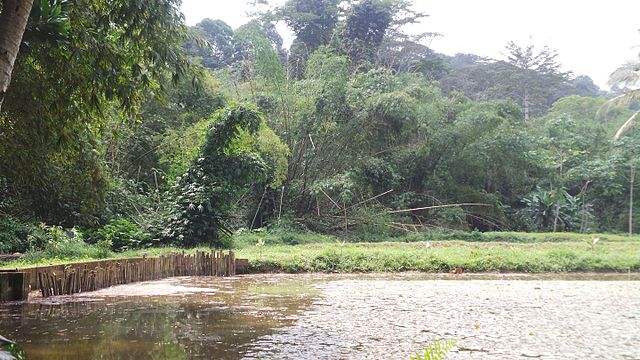
Nestled in the picturesque landscapes of a remote region, Banco National Park is a sanctuary of biodiversity, offering visitors a unique opportunity to immerse themselves in nature’s splendor. This hidden gem, often overlooked in favor of more popular destinations, boasts an array of ecosystems, rich wildlife, and captivating scenery. In this comprehensive guide, we will delve into the park’s history, diverse flora and fauna, recreational opportunities, conservation efforts, and practical tips for visitors.
History of Banco National Park
Origins
Banco National Park, established in [insert year], was created to protect a unique ecosystem characterized by [describe the specific ecosystems, such as tropical forests, wetlands, etc.]. The park’s history is deeply intertwined with the cultural heritage of the indigenous peoples who have inhabited the region for centuries. Their traditional practices and knowledge of the land have contributed to the park’s rich biodiversity.
Development
Over the years, the park has undergone various phases of development, aimed at enhancing conservation efforts while providing access to visitors. Initial infrastructure included basic trails and visitor centers, which have since evolved into a more comprehensive network of amenities designed to educate and engage guests about the importance of preserving natural habitats.
Biodiversity: Flora and Fauna
Unique Ecosystems
Banco National Park is renowned for its diverse ecosystems, which include [list specific ecosystems, such as rainforests, wetlands, etc.]. Each ecosystem supports a myriad of plant and animal species, making the park a vital area for biodiversity.
Flora
The park is home to thousands of plant species, many of which are endemic. Notable plants include:
- [Plant species 1]: A key species that supports various wildlife.
- [Plant species 2]: Known for its medicinal properties, used by local communities.
- [Plant species 3]: An example of the unique adaptations found within the park.
Fauna
The wildlife of Banco National Park is equally impressive, featuring numerous species of mammals, birds, reptiles, and insects. Some highlights include:
- [Animal species 1]: A rare species that attracts researchers and nature enthusiasts alike.
- [Animal species 2]: Known for its vibrant colors and unique behaviors.
- [Animal species 3]: An essential part of the park’s ecosystem.
Conservation Efforts
To protect its rich biodiversity, Banco National Park implements various conservation strategies. These include habitat restoration projects, anti-poaching initiatives, and community engagement programs aimed at promoting sustainable practices among local populations.
Recreational Opportunities
Banco National Park offers a variety of recreational activities, catering to adventure seekers, nature lovers, and families alike.
Hiking and Trails
The park features an extensive network of trails that range from easy walks to challenging hikes. Popular trails include:
- [Trail Name 1]: A short, scenic route suitable for families.
- [Trail Name 2]: A challenging hike that rewards adventurers with breathtaking views.
Birdwatching
With its rich avian diversity, Banco National Park is a birdwatcher’s paradise. Many species can be spotted throughout the park, including:
- [Bird species 1]: A migratory species that draws birdwatchers during specific seasons.
- [Bird species 2]: Known for its unique call and striking plumage.
Guided Tours
For those looking to deepen their understanding of the park’s ecology, guided tours are available. These tours are led by knowledgeable guides who provide insights into the park’s flora and fauna, as well as its cultural significance.
Camping
Camping in Banco National Park offers a chance to connect with nature overnight. Designated camping areas provide basic amenities, allowing visitors to experience the park’s tranquility after dark.
Visitor Information
Access and Transportation
Banco National Park is accessible via [insert nearest towns or cities and transportation options]. The journey to the park itself is an adventure, with stunning landscapes and opportunities to spot wildlife along the way.
Best Times to Visit
The ideal time to visit Banco National Park depends on what you wish to experience. The dry season, from [insert months], offers pleasant weather for hiking and wildlife spotting, while the rainy season, from [insert months], brings lush greenery and vibrant blooms.
Safety Tips
While Banco National Park is a safe destination, it’s essential to take precautions. Some tips include:
- Stay on marked trails: This helps protect fragile ecosystems and ensures your safety.
- Pack essential supplies: Bring water, snacks, and a first-aid kit, especially for longer hikes.
- Be aware of wildlife: Observe animals from a distance and never approach them.
Cultural Significance
Banco National Park is not just a natural haven; it also holds cultural significance for the indigenous communities that reside in and around the park. Traditional practices, folklore, and sustainable living are integral to the cultural fabric of the region. Visitors are encouraged to engage with local communities, participate in cultural events, and learn about their rich heritage.
Conservation Challenges
Despite its protected status, Banco National Park faces several conservation challenges, including:
- Climate Change: Altering weather patterns threaten local ecosystems and wildlife.
- Illegal Activities: Poaching and illegal logging pose significant risks to biodiversity.
- Invasive Species: Non-native species can disrupt local ecosystems, outcompeting native flora and fauna.
How to Get Involved
Visitors can contribute to conservation efforts in various ways:
- Volunteer Programs: Many organizations offer volunteer opportunities in the park.
- Donations: Supporting local conservation initiatives can make a difference.
- Eco-Friendly Practices: Practicing responsible tourism helps protect the park for future generations.
Conclusion
Banco National Park is a treasure trove of natural beauty and biodiversity, offering something for every nature enthusiast. From its rich ecosystems to its vibrant wildlife and cultural significance, the park is a testament to the importance of conservation and sustainable tourism. Whether you’re hiking through lush forests, birdwatching, or simply soaking in the serene landscapes, a visit to Banco National Park promises an unforgettable experience. As we cherish these natural wonders, it is our responsibility to ensure their protection for generations to come.
Call to Action
If you’re inspired to explore Banco National Park, plan your trip today! Share your experiences, respect the environment, and become an advocate for the preservation of this remarkable ecosystem. Let’s work together to protect our planet’s natural heritage!
